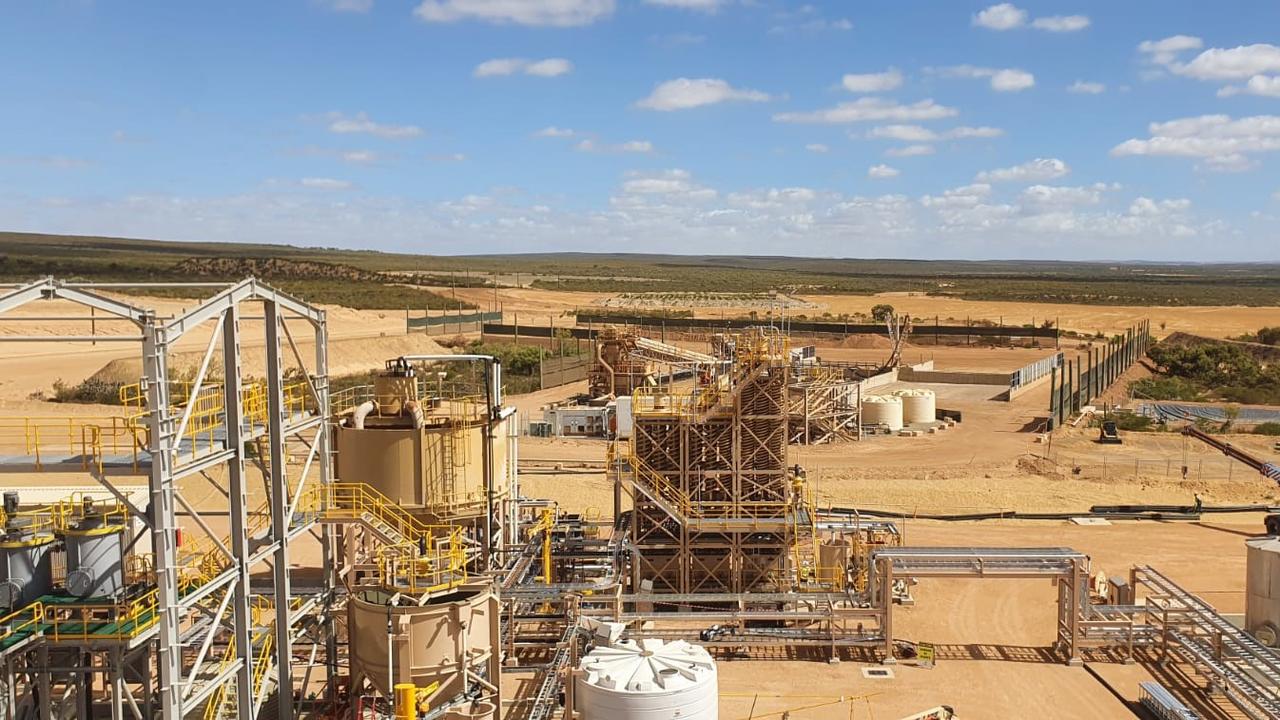Anglo American risks getting caught in four strategic traps it set for BHP
BHP boss Mike Henry has publicly moved on from Anglo American but the London-listed former target remains even more vulnerable.

Business
Don't miss out on the headlines from Business. Followed categories will be added to My News.
Four months have passed since Anglo American’s Duncan Wanblad delivered his radical plan to send Australian giant BHP packing.
It was at the height of BHP’s $75bn bid for London-listed Anglo – and came on the eve of a sweetener thrown in by the Australian miner’s chief executive Mike Henry.
At its heart was an ambitious reinvention of Anglo to fix its stretched balance sheet and become a focused copper miner. Wanblad’s plan gave Anglo’s board and his investors the confidence to shut the door to talks, forcing BHP’s Henry to walk away with his swag of cash.

To get to a copper future this would involve the simultaneous sale of four different operations at once: coking coal, nickel, platinum and the De Beers diamonds division were all on the block.
The sale of any of those units by themselves would be a challenge enough in normal times, but Wanblad gave himself an extremely tight two-year deadline just as commodity prices were rapidly cooling. This was arguably the biggest strategic error by Wanblad in that he gave himself little room for error in the execution.
Now Anglo risks getting caught in four traps it laid for BHP. And on the current path it looks likely to come out of the exercise in a more vulnerable position from when Wanblad started.
Henry has publicly moved on from Anglo but there are people inside BHP still watching the London miner. Under the UK’s so-called put up or shut up rules, bidders that haven’t made a formal offer are banned from returning for six months. In BHP’s case that’s November.
Since the new strategy was launched, Anglo’s shares have fallen more than 21 per cent while BHP’s shares are off 11 per cent in same period. And while Anglo is trading ex-takeover, the miner is no doubt being buffeted by softer commodity prices and its overexposure to the more depressed commodities of nickel, diamonds and platinum.
First on the Anglo boss’s plate were hopes to sell the Australian coking coal business by the end of this year. Any deal would come at the wrong moment, with the Chinese steel market rapidly cooling on the housing market glut. The portfolio covers five mines across Queensland’s Bowen Basin and the state’s super-sized coal mining royalty regime is turning of potential buyers (including BHP).
But a fire in June at its flagship mine – Grosvenor – has thrown a spanner in the works, with production likely to remain suspended until the end of the year while Anglo faces offloading its problems to someone else. It is possible to carve-out Grosvenor from the portfolio but that risks becoming a stranded asset with Anglo. Any sale could reset (down) prices for coal assets globally and potential buyers know this.

Elsewhere, Anglo’s 85 per cent-owned diamonds venture De Beers is another headache with a recent deal with the home market Botswana last month locking in a greater stake of the output of the diamond venture rising to 50 per cent the next decade. The diamond market too is being up-ended by the rise of cheaper synthetic diamonds that are almost impossible to tell from the real thing. A De Beers sale is scheduled for late in 2025 but could be pushed back.
In recent weeks Anglo tested the market by offloading a 5 per cent stake in its part-owned and listed South African platinum business AmPlats. The answer came back in the form of a steep 20 per cent discount from average trading price of the venture of recent months.
This only adds to the shortfall in funds Wanblad was hoping to raise to reinvest in his Woodsmith fertiliser project in the UK, which has essentially been mothballed. Wanblad hopes to engineer a full demerger, possibly by the first half of calendar 2025. This is expected to trigger a $US1bn ($1.5bn) tax liability.
Nickel too represents the final and fourth headache. Anglo’s bankers are currently shopping around two midsized Brazilian mines.
BHP made the point about how depressed the nickel market is by writing off $3.7bn from its Australian mines and mothballing the operations. Other Australian producers IGO and Wyloo have quit with Indonesia flooding the market with cheaper output.
Last month, BHP’s Henry told The Australian he has plenty of options in front him of instead of Anglo, including growing his South American copper business. This follows the $3.2bn deal struck after walking away from Anglo, that gives BHP exposure to several prospective copper assets in Chile and Argentina. Since then Henry has also detailed plans to spend up on the giant Escondida mine to wring more from the current output from the slowly maturing mine.
“(Anglo) was a disappointing outcome because we thought there was value to be unlocked for both sets of shareholders,” Henry told The Australian last month. “But I was very clear at the time, it wasn’t Plan A for us. Plan A is everything that you see outlined in these results, including getting better and better from our ongoing operations.”
The pressures that pushed BHP to Anglo in the first place aren’t going to go away. BHP’s own calculations have put demand for copper increasing 70 per cent over the next three decades and BHP will need to dramatically increase production into this demand curve rather than just keep current output steady to slightly rising.
The Australian miner is clearly patient enough to let Anglo do the risky work of cleaning itself up. BHP may have outwardly moved on, but could still come back if Anglo makes a mess of its great asset sale. One thing to be sure, $75bn won’t be back on the table again.
Originally published as Anglo American risks getting caught in four strategic traps it set for BHP









